The moment I stepped onto the banks of the Siang River, a quiet power surrounded me — an ancient strength flowing with the water, weaving through the mist-covered hills, and resting gently in the hearts of the people who call this land home. The Siang is more than a river here; it is a living legend, carrying stories older than the forests, whispering secrets of courage and survival across the winds.
The air was cool and fresh, tinged with the scent of wet earth and blooming wildflowers. A soft drizzle misted the leaves, making the lush green landscape shimmer under a silver-grey sky. As the river rushed past, I felt its pulse, steady and unyielding, like the spirit of the Adi tribe who have lived on these banks for centuries.
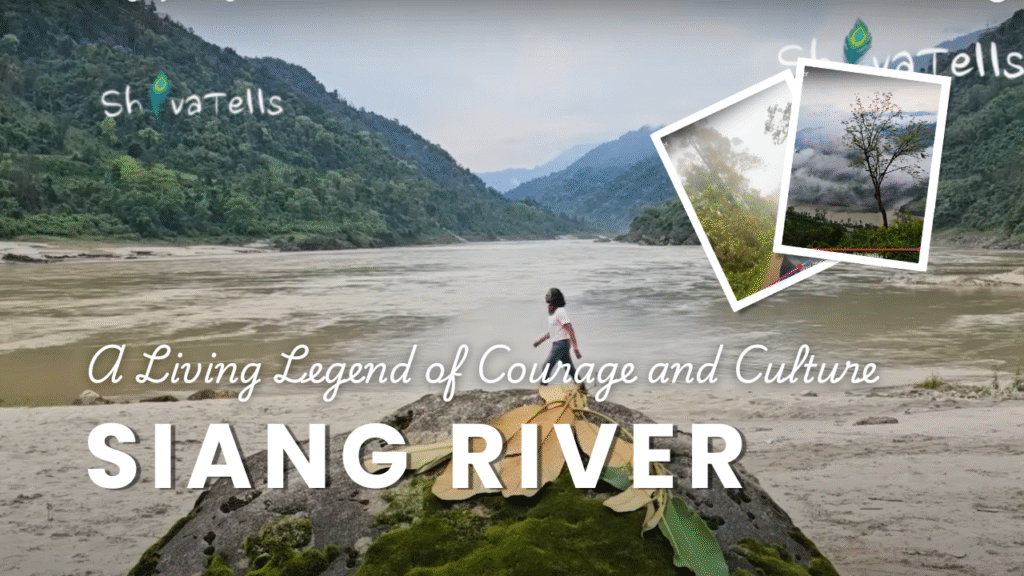
Table of Contents
The River that Holds Time
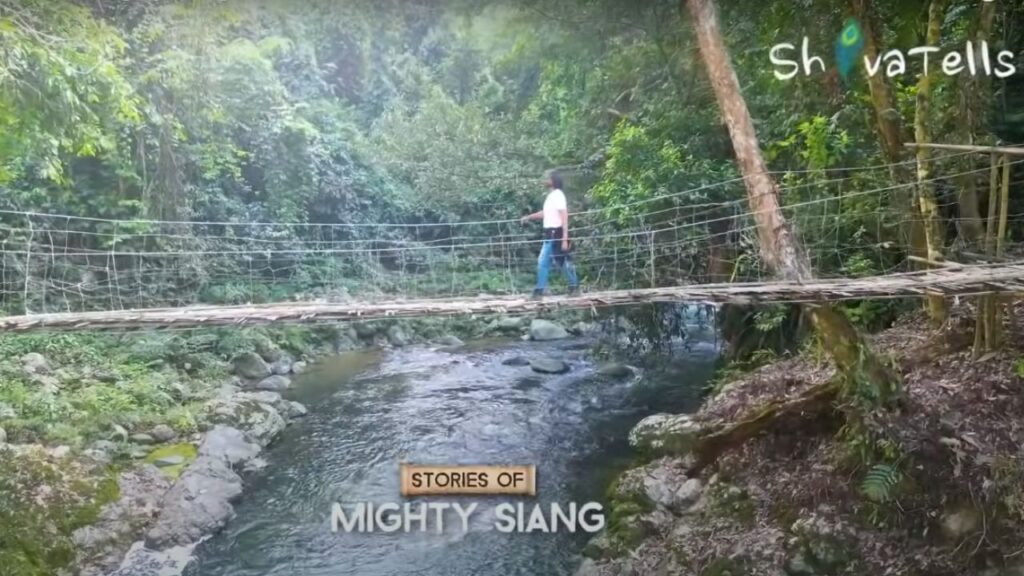
The Siang, fed by the great Brahmaputra in Assam, courses through Arunachal Pradesh like a shimmering ribbon. It nourishes the fields and the souls of the Adi people, whose connection to the river runs as deep as the waters themselves. Standing here, I saw children playing near the edge, their laughter ringing like bells, while elders sat under banyan trees, their eyes reflecting the river’s endless flow.
In every ripple, every gust of wind, I could sense stories — stories of battles, bravery, and honor that have been passed down in hushed voices around evening fires.
The Slap that Changed History
Long ago, when British officers marched into these hills with guns and commands, they met a fierce and proud people who would not bow easily. It was in 1911, in the village of Komsing, that a single act ignited a flame of resistance.
Williamson, a British officer, slapped Matmur Jamoh, a respected Adi man, in public. That slap wasn’t just a personal insult — it was a wound to the whole community’s pride. I could almost hear the roar of the crowd that followed, the fierce determination burning in their eyes.
The Adis fought back with raw courage and unyielding spirit. Williamson met a brutal end, and the villagers defended their land with spears, shields, and the strength of generations.
Walking the Land of Legends

I traced the winding paths to Komsing, where the earth still seemed heavy with memories. The village was quiet, wrapped in the soft patter of rain. The people here live simply, their lives interwoven with the forest and the river. An elderly man pointed to a small patch of earth where Williamson had fallen. There was no grand monument, only the soil — humble but powerful.
Inside a small museum, ancient spears gleamed faintly in the dim light. A wooden tool used by warriors sat beside old photographs, all telling tales of defiance and pride. As I touched the rough wood of a shield, I felt a shiver — as if the past was holding my hand.
The Quiet Strength of Pangin
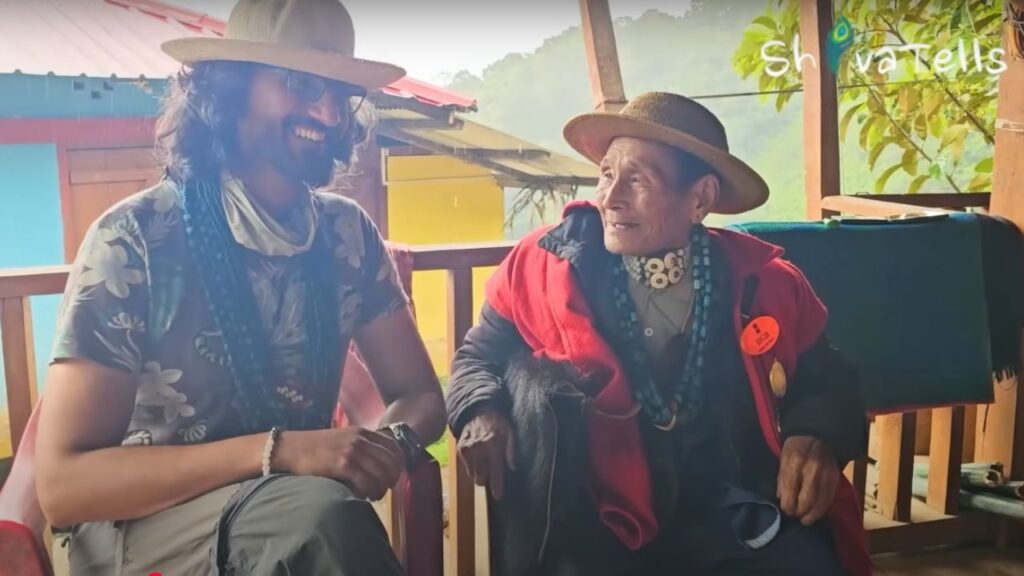
Further downstream lies Pangin, where the British set up their base after finally conquering the region. The air here was thick with the scent of wet pine and fresh blossoms. I stayed in a family home where warmth came not just from the fire but from the smiles and hospitality of my hosts.
Lumrum Tamuk, a local hero who had surrendered to protect his people, was remembered with reverence. His grandson showed me relics of war — swords that still held the scars of battle, and a British helmet with a dent, said to be the mark of a fierce strike.
These were not just museum pieces but living history, worn proudly during festivals and dances, reminding everyone that the spirit of resistance never died.
Nature’s Own Fortress
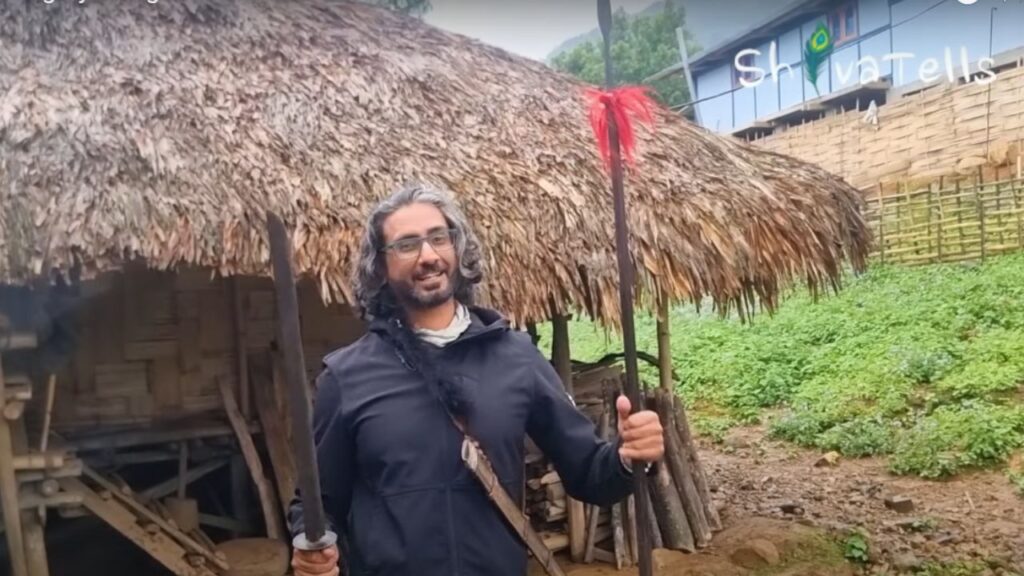
Beyond the battles and stories, the land around Siang is a fortress of nature’s own making. Emerald rivers cut through valleys, waterfalls roar into clear pools, and caves hide ancient secrets. In Kebang village, I watched children dive into the crystal-clear water, their joyful splashes echoing off the cliffs.
Nearby caves, once refuges for warriors during times of conflict, held the silence of centuries. One cave had a hidden exit behind a shield — a clever escape route where warriors could slip away unseen while enemies attacked the front. It was a perfect blend of nature and human ingenuity.
Nights of Apong and Storytelling

When night falls, the village comes alive in a different way. Around flickering fires, elders sip apong, the traditional rice beer, and recount tales of old. I joined them one rainy evening, savoring the warm, slightly sweet drink that filled the air with a sense of togetherness.
Laughter bubbled up around the fire, and songs rose into the night sky. The people here live close to the earth, connected not only by blood but by stories and rituals that have kept their culture vibrant.
A Farewell Blessed by the Sun and Moon
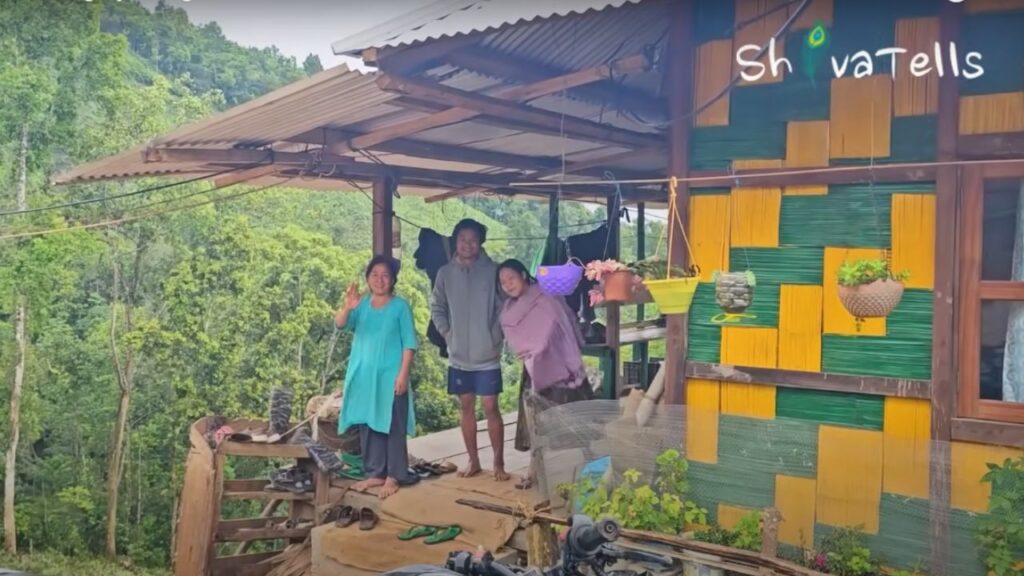
Before I left, the villagers gathered by the riverbank to bid me farewell. The sky was painted in hues of orange and pink as the sun dipped behind the hills. They blessed me in the name of Donyi Polo — their revered sun and moon deity — wishing me safe journeys ahead.
As I watched the Siang flow into the distance, I felt I had not just visited a place, but had been welcomed into a living story — one of pride, endurance, and a deep connection to nature and community.
Planning Your Journey to Siang
The Siang River region is still a hidden gem, where modern roads meet ancient trails.
- How to Get There: Fly to Dibrugarh Airport in Assam, then hire a taxi or take a local bus to Pasighat. From Pasighat, local transport can take you to Komsing, Pangin, or Kebang.
- Permits: An Inner Line Permit is necessary for Indian travelers. This can be easily applied for online before your trip.
- Where to Stay: Homestays in villages offer an authentic experience, or choose Lion’s Den Resort near the river for more comfort.
- Best Time to Visit: October to March — when the weather is clear and roads are safe.
- What to Carry: Sturdy shoes, rain gear, cash (ATMs are rare), and an open heart to embrace the culture.
Why Visit Siang?
Because here, every rock, every tree, every drop of water carries a story. A story of resistance and survival. A story of human spirit meeting nature head-on.
When you come to Siang, you don’t just see a river. You feel its soul.
And through its flow, you glimpse the timeless strength of the Adi tribe — proud, brave, and alive.
Other stories from Assam
- This Man from Assam lives and loves ORCHIDS!
- Strange Indian TRADITIONS | Rare Turtles are offered in this TEMPLE of ASSAM
